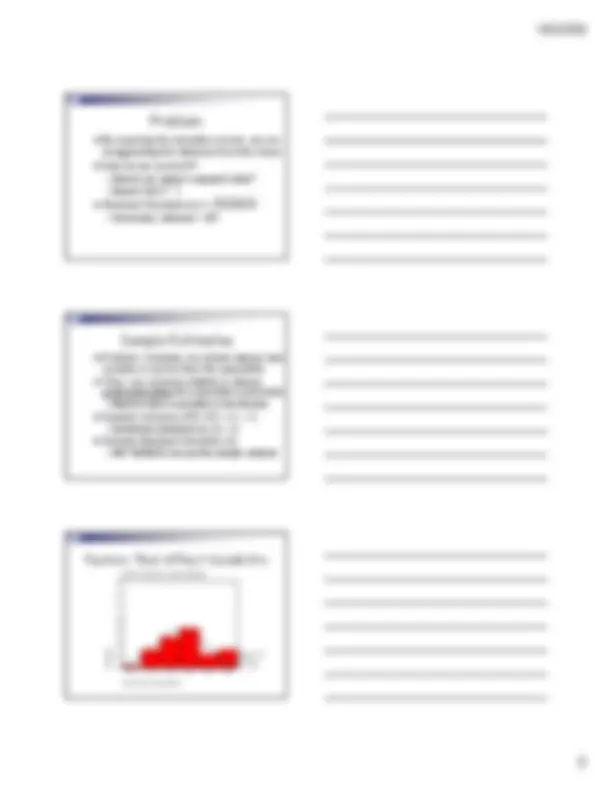





Study with the several resources on Docsity

Earn points by helping other students or get them with a premium plan


Prepare for your exams
Study with the several resources on Docsity

Earn points to download
Earn points by helping other students or get them with a premium plan
Community
Ask the community for help and clear up your study doubts
Discover the best universities in your country according to Docsity users
Free resources
Download our free guides on studying techniques, anxiety management strategies, and thesis advice from Docsity tutors
An introduction to multivariate statistics, focusing on the concept of variability and its measurement through variance and deviation scores. It covers the importance of variability in research, types of analyses, causes of variability, and methods for measuring and calculating variance. It also discusses the concept of standard deviation and sample estimates.
Typology: Exams
1 / 6

This page cannot be seen from the preview
Don't miss anything!




A collection of procedures which involve observation and analysis of more than one statistical variable at a time
Purpose of research is to explain:
situational variability
individual differencesindividual differences
temporal variability
All analyses in some way take variability into account
Two causes of variability
Systematic = What you have identified as a cause of variability
e.g., provocation causes aggressione.g., provocation causes aggression
Error = What you have not accounted for
e.g., past behavior, situational cues, personality
Measuring Variability
Behavior must be quantified in some way
Measures of behavior must be able to “pick up” variationpick up variation
Sum of Squares (SS)
The sum of the squared deviation scores
Remember: a negative number squared becomes a positive number (e.g., -3^2 = 9)
PPro: Summarizes deviation scores S i d i ti
Con: Too large (will resolve this later)
Definitional Formula
SS = Σ(X – μ) 2
Steps in calculation:
Variance
Average value of the squared deviation scores
Typical distance of scores from the mean
How is an average obtained?How is an average obtained?
Sum of scores ÷ Number of scores
Variance (σ 2 )= SS ÷ N
Used to obtain Population Variance
Problem By squaring the deviation scores, we are exaggerating the distance from the mean How do we correct it?
HH ow do you reduce a squared value?d d d l?
Square root (√ ) Standard Deviation (σ) = √Variance
Conversely, Variance = SD 2
Sample Estimates Problem: Samples are almost always less variable in scores than the population Thus, our variance statistic is always underestimating the population parameterg p p p
Need to make a correction in the formula Sample Variance ( s^2 )= SS ÷ ( n – 1)
Sometimes shortened as SS ÷ df Sample Standard Deviation ( s )
Still √variance, but use the sample variance
effort needed to pass classes 70 60 50
effort needed to pass classes
Frequency0.0 2.0 4.0 6.0 8.0 10.
40 30 20 10 0
Std. Dev = 2. Mean = 5. N = 100.